Posts on this site are never sponsored.
I recently upgraded a Sony VAIO Y Series laptop’s RAM from 4GB (2 sticks of 2GB) to 8GB (2 sticks of 4GB). (For those who have the VPCY216FD model, 8GB is the maximum supported amount of RAM.)
There are a few main things to look out for when upgrading RAM:
- Size: laptop RAM is typically 200-pin and labelled “SODIMM” whereas desktop RAM is typically 240-pin
- Speed part 1: DDR2 vs DDR3 for example
- Speed part 2: PC3-8500 for example
All 3 of the above are usually clearly stated in retail listings and classifieds such as Craigslist or eBay. The first 2 elements are usually obvious and the third is usually OK if you get a speed equal or higher than what your computer supports.
There is another factor called memory rank that has to do with the physical density of the RAM. In my case, the possible ranks were 2Rx8 (roughly allowing 8 memory “nodes” on each side of the RAM stick) and 1Rx8 (again with 8 memory “nodes” but only on one side of the RAM stick).
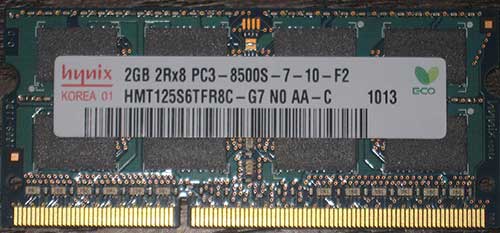
For most newer laptops, the difference in memory rank does not matter. For the particular Sony VAIO Y Series model I had, the memory that I bought for the upgrade did not work — the laptop would not start booting Windows and would automatically reboot after a few seconds.
The online listing for the RAM I purchased never mentioned the memory rank; as it turns out, the RAM I had received was 1Rx8 and I found no available documentation stating that the laptop would not support 1Rx8. (In fact, the pictured clearly showed 2Rx8 on the sticker, but I received something different.) After much Googling, I found a forum post where someone else mentioned that their Sony laptop only worked with the 2Rx8 memory rank. I returned the 1Rx8 RAM and made sure to buy 2Rx8 RAM. Sure enough, the 2Rx8 RAM worked!
Posted in Computer Stuff | No Comments »
For quite a while I couldn’t figure out why my keyboard would suddenly switch to French mode. The question mark would turn into a capital, accented É; the “#” symbol would turn into a forward slash; and more. I had to close the program I was in and re-open it to restore the standard US keyboard layout. As it turns out, pressing CTRL+Shift on the keyboard is a common shortcut for changing the keyboard language on Windows 7. If you find yourself with your keyboard language layout suddenly changed, just press CTRL+Shift until the correct layout returns.
You can check your keyboard language settings by clicking “Region and Language” in the control panel…
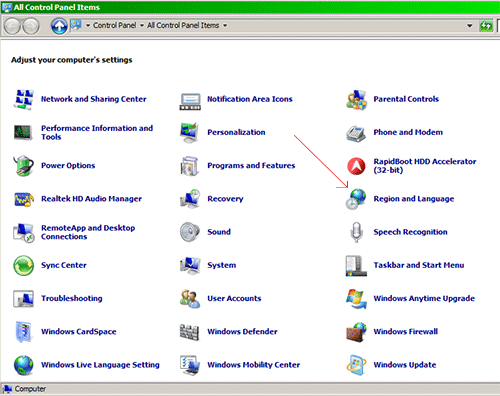
… then click on the “Keyboards and Languages” tab and click the “Change keyboards…” button:

You can then see the configured keyboard layouts and the “hot key” for changing languages:
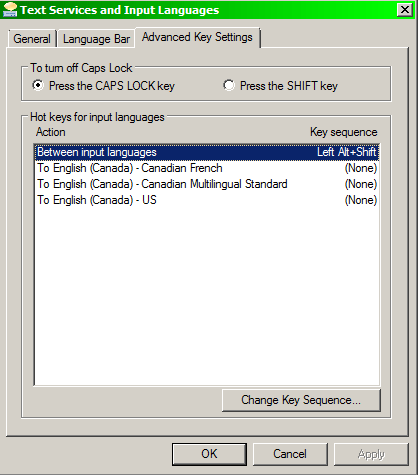
I was accidentally triggering the layout change by using the CTRL+Shift+V shortcut to paste text and remove the formatting (bold, italics, headers, and so on) in the source text.
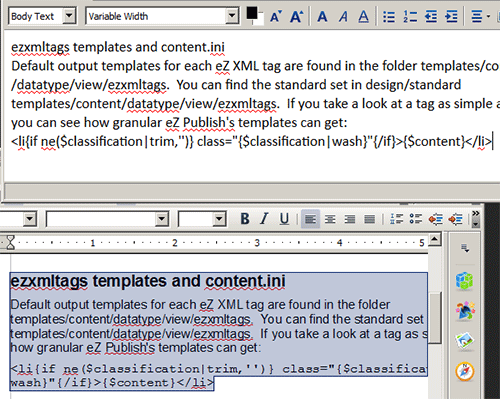
CTRL+V is the standard shortcut to paste text, but most programs will try to preserve the formatting, which you don’t always want; and when you want to preserve the formatting, sometimes the destination program messes it up! In programs that support it, CTRL+Shift+V strips the formatting so that you don’t first have to paste into another program such as Notepad and then copy and paste into the destination program. Just be careful about accidentally changing your keyboard language if you press CTRL+Shift instead of CTRL+Shift+V!
Posted in Computer Stuff | 1 Comment »
The city of New Westminster hadn’t seen a first-run movie theatre since 1985 when Columbia Cinemas closed its doors. As part of the Plaza 88 complex (now called Shops at New West) built around the New Westminster SkyTrain station, Landmark Cinemas opened in May 2012.
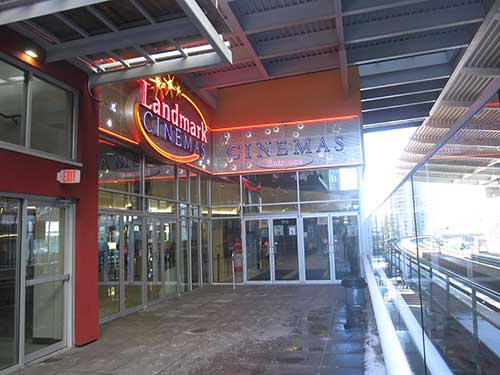
The theatre is clean, well-kept, and has comfortable seating. (Although, as of the time this was written, the theatre is only 2.5 years old.) You can buy tickets online, at the concession, or at a row of machines at the entrance. You get to choose specific seats at no extra cost. This is nice as you don’t have to go extra early and hang around to claim your seat.
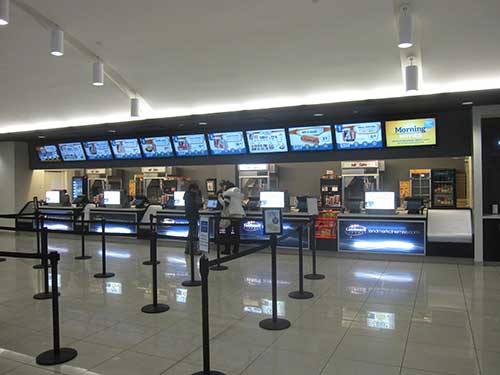
Landmark Cinemas in New Westminster has 10 screens. It is a quieter, convenient alternative to SilverCity Metropolis at Metrotown (in Burnaby).
Regular general admission is $11.25, and matinees are $9. 3D movies are more expensive. On Saturdays and Sundays, there are morning movie showtimes for only $6.25, which is a cheap way to enjoy a little weekend luxury!

Posted in Vancouver / BC / Canada | No Comments »
Varnish Cache is a high performance reverse proxy with an easy-to-use configuration language. However, there are lots of things that you cannot do by default in a Varnish configuration file. For example, you cannot reliably read response cookies because Varnish only reads the first “Set-Cookie” header.
Therefore, you sometimes need to use Varnish extensions, called “modules” or “VMODs” to provide additional functionality. One of the most popular modules is the “header” module, which enables you to reliably read response cookies, among other things. You have to compile Varnish modules and place them in the “vmods” folder, which is typically /usr/libs64/varnish/vmods. Before Varnish 4, you had to compile them against the source code of Varnish itself. Starting from Varnish 4, you can compile them against the running Varnish installation. In other words, you should be able to just download the module code, then run the commands ./configure, make, and make install from the downloaded module code directory. You just have to install the “varnish-lib-devel” package using “yum” on CentOS / Red Hat (or “libvarnishapi-dev” using “apt-get” on Debian / Ubuntu).
Compiling code is a rather foreign concept for many developers and it would be nice to have the compiled Varnish module files for the major operating system versions available for download. That would make the installation process much easier! Here is the Varnish “header” module compiled against Varnish 4.0.2 on 64-bit CentOS 6.5.
Posted in Web development tutorials | 1 Comment »
I’m a fan of XE Trade for making online currency transfers, and most of all for sending money internationally.
If you go to xe.com, you’ll find the mid-rate exchange rates. The rates provided by XE Trade are always “worse” than the rates on xe.com, since XE Trade adds their own margin. I’ve discovered that XE Trade rates are always even worse on weekends; I decided to record the spread on various days for the USD to CAD exchange rate. Here’s a sampling of the exchange rate spread from September 2014 taken on different days at random times of the day.
| Date |
Day of week |
xe.com |
XE Trade |
Spread |
| September 1 |
Monday (holiday) |
1.08681 |
1.123 |
0.03619 |
| September 2 |
Tuesday |
1.09040 |
1.1066 |
0.0162 |
| September 3 |
Wednesday |
1.08991 |
1.106 |
0.01609 |
| September 4 |
Thursday |
1.08414 |
1.1008 |
0.01666 |
| September 5 |
Friday |
1.08857 |
1.1051 |
0.01653 |
| September 6 |
Saturday |
1.08815 |
1.124 |
0.03585 |
| September 8 |
Monday |
1.09249 |
1.1086 |
0.01611 |
| September 9 |
Tuesday |
1.10285 |
1.1188 |
0.01595 |
| September 12, 7:32am Pacific |
Friday |
1.10713 |
1.1235 |
0.01637 |
| September 12 |
Friday, 4:40pm Pacific |
1.10935 |
1.1452 |
0.03585 |
| September 16 |
Tuesday |
1.10195 |
1.1178 |
0.01585 |
| September 27 |
Saturday |
1.11545 |
1.1515 |
0.03605 |
Bottom line: use XE Trade only on business days! Also, according to the sample from late on Friday September 12, you should make sure to do any currency trades before markets have closed. Based on my tests, the average spread on business days was 1.622%, whereas on non-business days it was 3.5985%. That’s almost a 2% difference.
On a related note, if you are making USD-CAD currency transfers within a business account in Canada, some of the banks’ currency exchange services might provide better rates than XE Trade. Specifically I’ve found that RBC‘s rates are often better than XE Trade. It’s much more of a pain trying to send money internationally from a business account using RBC, though!
Posted in Canadian Banking | 1 Comment »









 keung.biz. Hire my web consulting services at
keung.biz. Hire my web consulting services at  Follow us on Twitter
Follow us on Twitter

